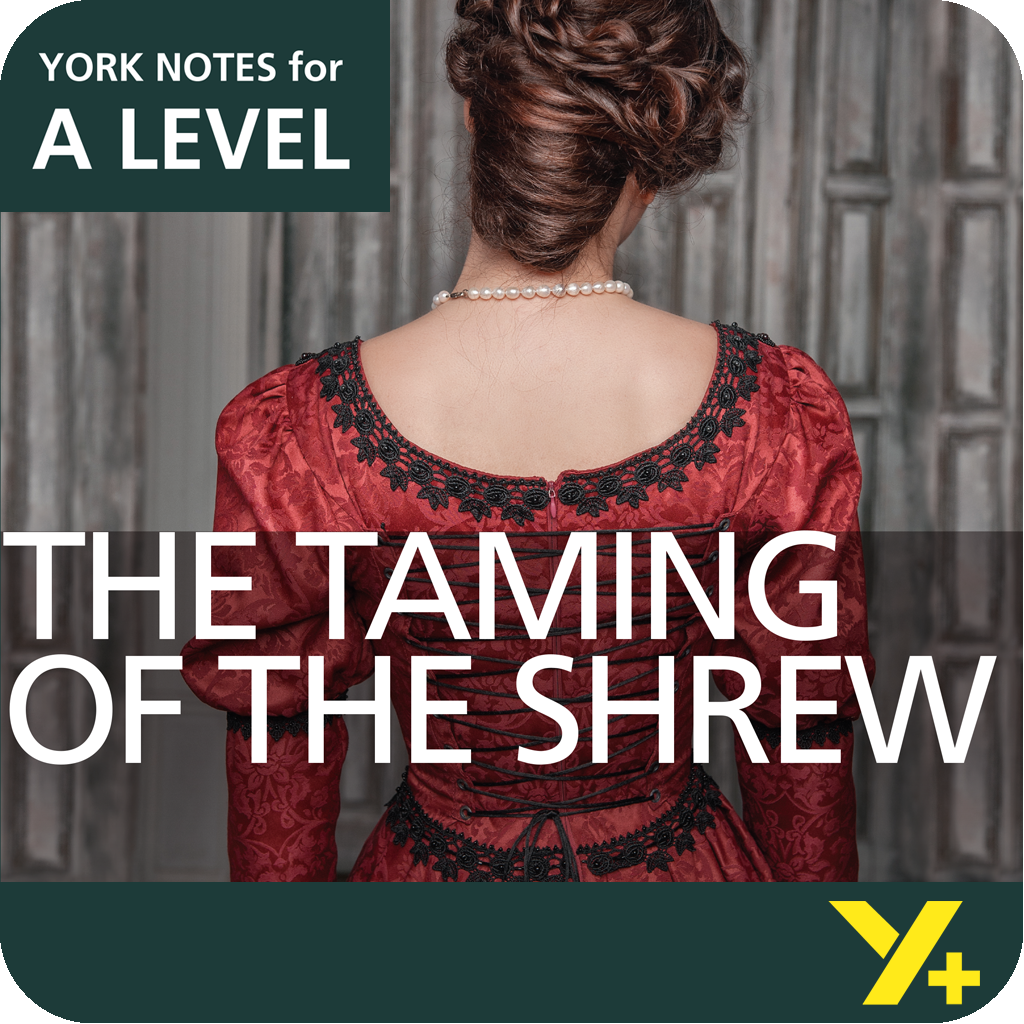Examiner's Notes
You assessed this answer as a Mid.
Hover over the highlighted text to read the examiner’s comments. These are linked to the Assessment Objectives, which are listed in the side panel.
Fittingly for a major sequence, Shakespeare weaves together the different comic methods he employs throughout the play. The most obvious of these is farce, as Petruccio and Grumio ‘defend’ Katherina against the Paduans. The spectacle they present in their ridiculous clothes is fully exploited; Petruccio’s ‘old rusty sword’ and the puny stature of the ‘little pot’ Grumio suggest their fighting techniques will evoke laughter. However, although this scene has been played as broad slapstick (Edith Evans was carried off on a pantomime horse) Shakespeare gives it a satirical edge. Petruccio radically disrupts this wealthy and rather smug society. Earlier – in the church for example – his antics humiliated Katherina. In this sequence, however, he seems more interested in ridiculing the Paduans. In the first scene they made a ‘stale’ of Katherina, deriding her failure to marry; here they perhaps anticipate the bridal dinner as an opportunity for bawdy jokes at her expense – Elizabethan wedding celebrations were notoriously ribald. Instead they receive a Puritanical diatribe from Petruccio – ‘be mad and merry or go hang yourselves’ – as if they, not Katherina, were the unmannerly ones. Their dismayed reactions offer the actors comic opportunities – especially for Baptista, who must be wondering what sort of son-in-law he has paid for. Although once the stage is safely clear of the anarchic couple, the wedding guests claim they were ready to ‘die with laughing’, the audience has observed and enjoyed their discomfiture. Petruccio’s words and actions here divide the community into opposing sides – Petruccio and his ‘bonny Kate’ against these hypocrites who may talk about love, but treat women (to use Tranio’s term) as a ‘commodity’. He may be a fortune hunter, but this refusal to conform to Paduan values is refreshing. If we recall Katherina’s anger and isolation in Scene 1, we may begin to envisage a bond between this unlikely couple. Shakespeare is preparing us for the final scene, which sharply contrasts the unity of ‘outsiders’ Petruccio and Katherina to the ‘loving’ couples bickering at their own feast.
In contrast to this bustle, Shakespeare employs the commedia dell’arte conventions of the subplot for quieter, more sophisticated laughter. Here the success of Tranio’s early intrigues reach a logical conclusion, one that may comically disconcert Lucentio. In his disguise as a lowly tutor he has to address his beloved respectfully as ‘mistress’, while watching his own servant – wearing his own fancy clothes – treated deferentially as Bianca’s wealthy fiancé. As Baptista invites the disguised Tranio to ‘supply the bridegroom’s place’, Lucentio may react involuntarily and have to stifle a reply; worse, he hears Tranio flirtatiously referring to ‘sweet Bianca’ as he goes to his place at the feast beside her, the seat that should be Lucentio’s. Lucentio’s attempts to repress his jealousy and remember his schoolmaster role will provide much silent comedy, and anticipate his subsequent disillusionment with Bianca. Katherina’s wedding also removes any reason to delay Bianca’s. The audience will now be in suspense to see whether the clever servant can find a ‘father’ for his master up his sleeve.
For Katherina this is a painful episode, as her tirade against Petruccio suggests. I agree with Susan Bassnett that ‘The Taming of the Shrew’ is a ‘problem play’. However, I believe that if ‘comedy’ means ‘a story with a happy ending’ Katherina is better off at the end of the play. This sequence is an important turning point for her character. It marks the beginning of a shift from her entrenched position as angry, unwanted outsider into a partnership. As her final speech in the play indicates, this is an Elizabethan marriage where the wife ‘obeys’ the husband, but it does contain the possibility of love. Petruccio’s insistence that she can ‘command’ others to the feast but not go herself, and his Biblically- based description of her role as ‘my household stuff ... my anything’ assert his marital authority, and this is painful for her. Alongside this, however, comes an unspoken invitation to join a game: a parody of romantic chivalry as he cries ‘touch her whoever dare’. Petruccio’s enjoyment of paradox and play-acting, so evident here, is something Katherina finally chooses to share by teasing Vincentio in Act IV – and the wit she shows in praising the ‘young budding virgin’ suggests she enjoys herself. In this extract she is – unsurprisingly – too shocked and bewildered to participate. But the rescue game is, literally, her way out of Padua and its mean-minded values. It completely negates Baptista’s treatment of her as a waste product to be disposed of before he can market Bianca. Here, as throughout, Petruccio describes Katherina as an object of desire, one Gremio and co. might want to steal. Shakespeare makes him use such language throughout the taming process, thus modifying its darker aspects. Petruccio never disparages Katherina. This lets us see his ‘sweet wench’ as the heroine of a comedy of love rather than a misogynist stereotype.
Simplistic comedy confirms stereotypes. Complex comedy makes you see the world differently. I believe with Graham Holderness that in this play Shakespeare is joining the marriage debates of his era. By using so many comic styles – farce, commedia, anarchic games – and calling attention to them by framing the whole story with the Induction to make a comedy-within-a-comedy, he makes us laugh, but also ensures we think about what we are laughing at.
